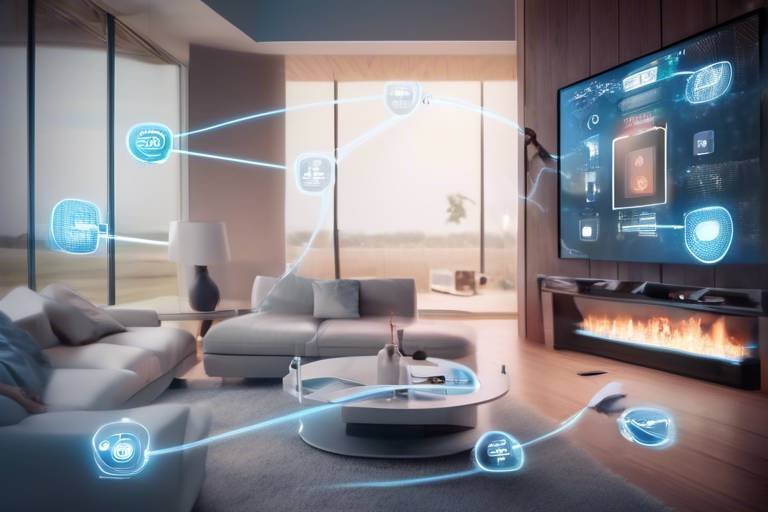How Robotics is Improving Disaster Recovery
In recent years, the integration of robotics into disaster recovery efforts has transformed the landscape of emergency response. Imagine a world where robots can swiftly navigate through rubble, assess damage from the sky, and even communicate vital information to rescue teams—all while keeping human responders safe. This is not just a futuristic dream; it’s the reality we are witnessing today. Robotics technology is enhancing efficiency and safety during emergencies, allowing for quicker response times and more effective resource allocation. As we delve deeper into this topic, we’ll explore the various applications of robotics in disaster recovery, the benefits they bring, and the exciting potential for the future.
Drones have emerged as a game-changer in disaster assessment, providing aerial views and real-time data that are crucial during emergencies. With their ability to fly over affected areas, drones enable quicker assessments of damage, which is essential for effective resource allocation. Imagine a drone soaring high above a disaster zone, capturing images and relaying critical information back to ground teams. This capability is invaluable, especially when access to certain locations is hindered by debris or hazardous conditions. By utilizing drones, emergency responders can prioritize their efforts and deploy resources where they are needed most, ultimately saving more lives.
Robotic search and rescue teams are revolutionizing the way we locate and assist victims in disaster situations. These advanced robots can navigate hazardous environments, such as collapsed buildings or flooded areas, ensuring that human rescuers can focus on saving lives without putting themselves at risk. Picture a robot equipped with cameras and sensors, methodically searching through wreckage for signs of life. This not only speeds up the rescue process but also significantly enhances safety for the responders on the ground. The use of robotics in search and rescue operations is not just a trend; it’s a vital component of modern disaster response strategies.
Different types of search and rescue robots are designed for specific environments, each offering unique advantages that enhance the effectiveness of rescue operations. Here’s a quick overview:
| Type of Robot | Environment | Advantages |
|---|---|---|
| Wheeled Robots | Urban | Can maneuver through debris and navigate tight spaces. |
| Tracked Robots | Rugged Terrain | Stable movement over uneven surfaces. |
| Aerial Robots | Remote Locations | Cover large areas quickly and provide vital aerial data. |
Wheeled robots are particularly useful in urban settings, where they can maneuver through debris and navigate tight spaces with ease. Their design allows for efficient movement and quick assessment of affected areas, making them indispensable tools for first responders. Imagine a wheeled robot weaving through the wreckage of a collapsed building, sending back real-time images and data that help rescuers formulate a plan of action. This capability not only speeds up the recovery process but also increases the chances of finding survivors.
Aerial robots, commonly known as drones, excel in reaching remote or inaccessible locations. They can cover vast areas quickly, providing vital information to rescue teams and helping coordinate relief efforts more effectively. Think about the impact of a drone flying over a flooded region, capturing high-resolution images that reveal the extent of the disaster. This aerial perspective is crucial for making informed decisions about where to send help and how to allocate resources efficiently.
Despite their numerous advantages, robotic rescue operations face challenges that need to be addressed. Technical limitations, environmental obstacles, and the need for human oversight are just a few of the hurdles that can hinder the effectiveness of these technologies. For instance, robots may struggle in extreme weather conditions or when navigating complex terrains. Moreover, human oversight remains essential to ensure that robots are deployed effectively and safely. Overcoming these challenges is crucial for maximizing the potential of robotics in disaster recovery scenarios.
Robots can significantly enhance communication during disasters by providing reliable information channels. They can assist in relaying messages and coordinating efforts between rescue teams and affected communities, ultimately improving overall response effectiveness. Imagine a scenario where a robot is deployed to communicate with stranded individuals, gathering information about their needs and relaying it back to rescue teams. This capability ensures that critical information is shared promptly, aiding in decision-making and resource allocation.
Various robotic communication tools, such as telepresence robots and mobile communication units, facilitate interaction between responders and victims. These tools ensure that essential information is shared quickly and accurately, which is vital in high-pressure situations. For example, a telepresence robot can allow a medical professional to assess a victim remotely, providing guidance to on-site responders without the need for physical presence. This not only saves time but also optimizes the use of medical resources during emergencies.
Integrating robotics with emergency services can streamline operations and enhance collaboration. This synergy improves situational awareness and allows for more coordinated and efficient disaster response efforts. When robots and human responders work together, the result is a more effective and comprehensive approach to disaster recovery. The combination of human intuition and robotic precision can lead to better outcomes, ultimately saving more lives and resources.
The future of robotics in disaster recovery is incredibly promising, with advancements in AI, machine learning, and material science on the horizon. These innovations will enhance robot capabilities, making them even more effective in emergency situations. Imagine robots that can learn from their environments, adapting their strategies in real-time to improve rescue efforts. This level of sophistication will revolutionize how we approach disaster recovery.
AI and machine learning are set to revolutionize disaster robotics by enabling smarter decision-making and autonomous operations. These technologies will allow robots to adapt to changing environments, improving their rescue capabilities. For instance, a robot equipped with AI could analyze data from its surroundings and determine the safest path to navigate through debris, all while identifying potential hazards. This autonomous capability will not only enhance safety but also increase the efficiency of rescue operations.
Collaborative robots, or cobots, can work alongside human responders to optimize disaster recovery efforts. Their ability to assist and augment human capabilities will lead to safer and more efficient operations in crisis situations. Picture a scenario where a cobot helps carry heavy equipment or supplies, allowing human responders to focus on critical tasks. This collaboration can significantly enhance the overall effectiveness of disaster response efforts.
- What types of robots are used in disaster recovery? There are various types of robots, including wheeled, tracked, and aerial models, each designed for specific environments and tasks.
- How do drones help in disaster assessment? Drones provide aerial views and real-time data, allowing for quicker assessments of damage and better resource allocation.
- What challenges do robotic rescue operations face? Challenges include technical limitations, environmental obstacles, and the need for human oversight to ensure safety and effectiveness.
- How can robots enhance communication during disasters? Robots can relay messages and coordinate efforts between rescue teams and affected communities, improving overall response effectiveness.
- What is the future of robotics in disaster recovery? The future holds promising advancements in AI, machine learning, and material science, which will enhance robot capabilities and effectiveness in emergencies.
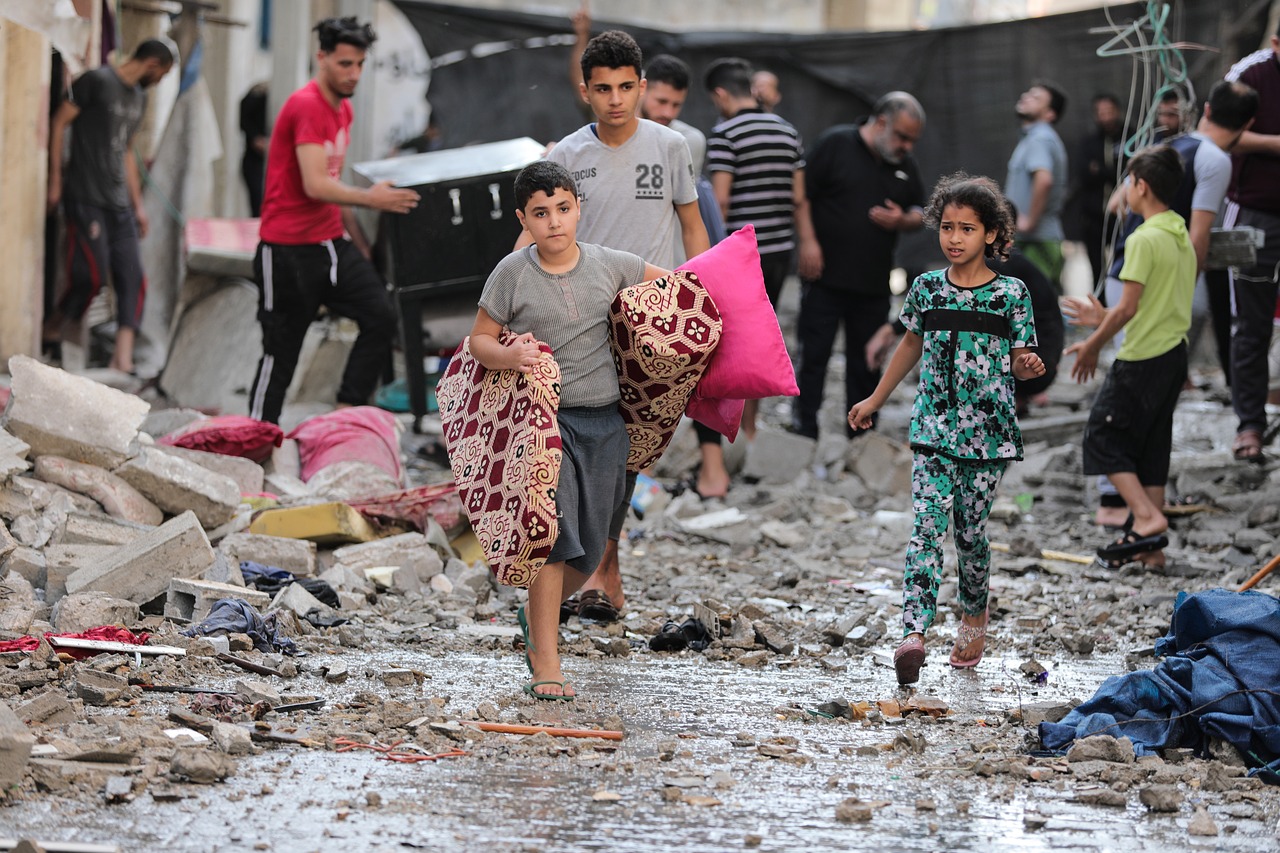
The Role of Drones in Disaster Assessment
When disaster strikes, every second counts. In these critical moments, drones have emerged as game-changers, providing invaluable aerial views and real-time data that can significantly enhance disaster response efforts. Imagine a scenario where a natural disaster has left a community in ruins; the traditional methods of assessment can be slow and cumbersome, often putting rescue teams at risk. This is where drones come into play, offering a bird's-eye view of the affected areas, allowing for quicker assessments of damage and better resource allocation.
Drones are equipped with advanced camera technology and sensors that can capture high-resolution images and gather vital information about the extent of the damage. They can fly over hard-to-reach areas, such as collapsed buildings or flooded regions, where human access is limited or dangerous. This capability not only speeds up the assessment process but also ensures that responders can prioritize their efforts based on accurate and up-to-date information.
Moreover, the data collected by drones can be processed and analyzed in real-time, giving rescue teams a clearer picture of the situation on the ground. This information is crucial for effective decision-making and can help in determining the best strategies for deploying resources. For instance, if a drone identifies a heavily damaged area with trapped individuals, rescue teams can be dispatched immediately to that location, rather than wasting time on areas that may not require urgent attention.
In addition to damage assessment, drones can also assist in search and rescue operations. They can be equipped with thermal imaging cameras to detect heat signatures, making it easier to locate survivors in challenging environments. This technology can be especially beneficial during nighttime operations or in areas obscured by smoke or debris.
To illustrate the impact of drones in disaster assessment, consider the following table that outlines some key benefits:
| Benefit | Description |
|---|---|
| Speed | Drones can quickly survey large areas, providing immediate data to responders. |
| Accessibility | They can reach remote or hazardous locations that are dangerous for human teams. |
| Real-time Data | Drones relay information in real-time, aiding in timely decision-making. |
| Cost-effective | Using drones can reduce the need for extensive manpower and resources. |
In conclusion, the role of drones in disaster assessment is not just a technological advancement; it’s a lifeline that can save lives and streamline recovery efforts. As technology continues to evolve, we can expect even more sophisticated applications of drones, further enhancing their ability to assist during emergencies. The integration of drones into disaster response strategies marks a significant step forward, ensuring that we are better prepared to face the unexpected.
- How do drones collect data during disasters? Drones are equipped with various sensors and cameras that capture images, videos, and environmental data, which can be analyzed in real-time.
- Are drones safe to use in disaster zones? Yes, drones are designed to operate in challenging environments, and their ability to access hazardous areas reduces risks for human responders.
- What types of drones are used for disaster assessment? Various types of drones are used, including fixed-wing drones for long-distance surveys and quadcopters for detailed inspections of specific areas.

Robotic Search and Rescue Teams
In the face of natural disasters and emergencies, the deployment of has become a game-changer. These innovative machines are designed to navigate perilous environments that are often too dangerous for human rescuers. Imagine a scenario where a building has collapsed due to an earthquake; the chaos, the uncertainty, and the looming threat of aftershocks make it a treacherous place for people. This is where robots come into play, acting as the first responders in situations where every second counts.
Robotic search and rescue teams are equipped with advanced technologies that allow them to perform various tasks effectively. They can locate victims, assess damage, and even deliver supplies. These robots are engineered to operate in challenging conditions, whether it be navigating through rubble, crawling through tight spaces, or flying above disaster zones to gather aerial data. The integration of these robots into rescue operations not only enhances the speed of response but also significantly increases the safety of human rescuers.
To better understand the capabilities of these robotic teams, let’s delve into the different types of search and rescue robots that are making waves in disaster recovery:
| Type of Robot | Key Features | Best Use Case |
|---|---|---|
| Wheeled Robots | Fast mobility, can navigate urban debris | Urban environments |
| Tracked Robots | Stability on uneven terrain, can carry heavy loads | Rural or rugged areas |
| Aerial Drones | Real-time aerial footage, can cover large areas | Remote or inaccessible locations |
Each type of robot is specifically designed to tackle unique challenges presented by different disaster scenarios. For instance, wheeled robots excel in urban settings where they can swiftly maneuver through debris and tight spaces. They are equipped with cameras and sensors that allow them to assess the situation and relay critical information back to human teams. On the other hand, aerial drones are invaluable for reaching remote locations that are otherwise unreachable by ground teams. They can quickly survey large areas, providing real-time data that is crucial for effective decision-making.
However, the deployment of robotic search and rescue teams is not without its challenges. Technical limitations, such as battery life and sensor accuracy, can hinder their effectiveness. Additionally, environmental obstacles like harsh weather conditions can impact their performance. Despite these challenges, the potential for robotic teams to transform disaster recovery operations is immense. As technology continues to advance, we can expect these robots to become even more capable and reliable.
In conclusion, robotic search and rescue teams are at the forefront of revolutionizing disaster response efforts. They not only enhance the safety of human rescuers but also improve the overall efficiency of operations. With ongoing advancements in robotics, the future looks bright for these life-saving machines as they continue to play a pivotal role in humanitarian efforts worldwide.
- What types of robots are used in search and rescue operations? Various types of robots, including wheeled robots, tracked robots, and aerial drones, are utilized based on the specific environment and needs of the rescue operation.
- How do robotic teams improve safety during disasters? Robots can enter hazardous areas without risking human lives, allowing for safer assessments and rescue operations.
- What challenges do robotic search and rescue teams face? Challenges include technical limitations, environmental obstacles, and the need for human oversight to ensure effective operations.
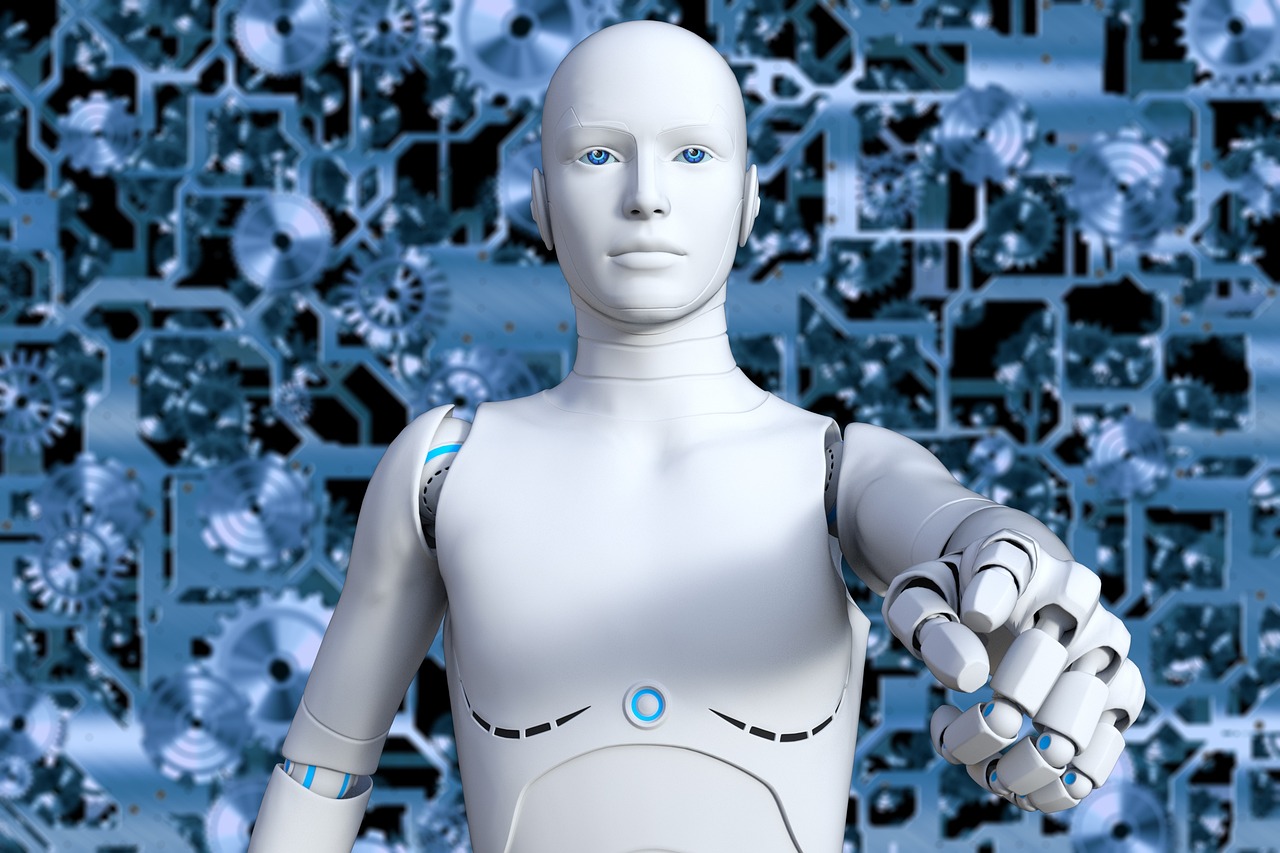
Types of Search and Rescue Robots
When it comes to search and rescue operations, the diversity of robotic technology plays a crucial role in enhancing effectiveness and safety. Different types of robots are designed to tackle specific challenges posed by various environments, ensuring that rescue teams can operate efficiently. In this section, we'll explore the primary types of search and rescue robots and their unique advantages.
One of the most common categories is wheeled robots. These robots are engineered for urban environments where navigating through debris and tight spaces is essential. Their wheels provide excellent mobility on flat surfaces, allowing them to quickly traverse areas that may be too dangerous for human responders. Equipped with cameras and sensors, wheeled robots can assess damage, locate victims, and relay critical information back to rescue teams. For instance, imagine a situation where a building has collapsed; a wheeled robot can maneuver through the rubble, sending live footage to rescuers above, thus aiding in decision-making.
Next, we have tracked robots, which are particularly adept at traversing rough terrains. Unlike wheeled robots, tracked robots use continuous tracks that distribute their weight, allowing them to move over obstacles like debris or uneven ground without getting stuck. This capability is crucial in disaster scenarios where terrain can be unpredictable. These robots often come equipped with advanced sensors and cameras, making them invaluable for searching large, hazardous areas.
Then, there are aerial robots, commonly known as drones. Drones are revolutionizing search and rescue by providing aerial perspectives that ground teams simply cannot achieve. They can cover vast areas in a short amount of time, making them ideal for locating victims in remote or hard-to-reach locations. For example, during a flood, aerial drones can quickly assess the extent of the water damage and identify stranded individuals or communities in need of immediate assistance. Their ability to access high altitudes and wide areas makes them a powerful tool in the arsenal of search and rescue operations.
In addition to these primary types, there are also submersible robots designed for underwater rescues. These robots are equipped with cameras and tools to explore submerged areas, such as rivers or lakes, where traditional rescue methods might fail. They can search for victims or assess damages to underwater structures, proving essential in comprehensive disaster recovery efforts.
To summarize, the variety of search and rescue robots—wheeled, tracked, aerial, and submersible—each brings unique strengths to the table. Their specific designs allow them to operate in different environments, enhancing the overall efficiency of rescue missions. As technology continues to evolve, we can expect even more specialized robots to emerge, further improving our ability to respond to disasters effectively.
- What are the main types of search and rescue robots?
The main types include wheeled robots, tracked robots, aerial drones, and submersible robots, each designed for specific environments and challenges. - How do aerial drones assist in disaster recovery?
Aerial drones provide real-time aerial views and data, allowing for quick assessments of damage and identification of victims in hard-to-reach areas. - What advantages do tracked robots have over wheeled robots?
Tracked robots can navigate rough and uneven terrains more effectively, making them suitable for debris-laden environments. - Are there robots designed for underwater rescues?
Yes, submersible robots are specifically designed to operate underwater, allowing for searches and assessments in flooded areas.
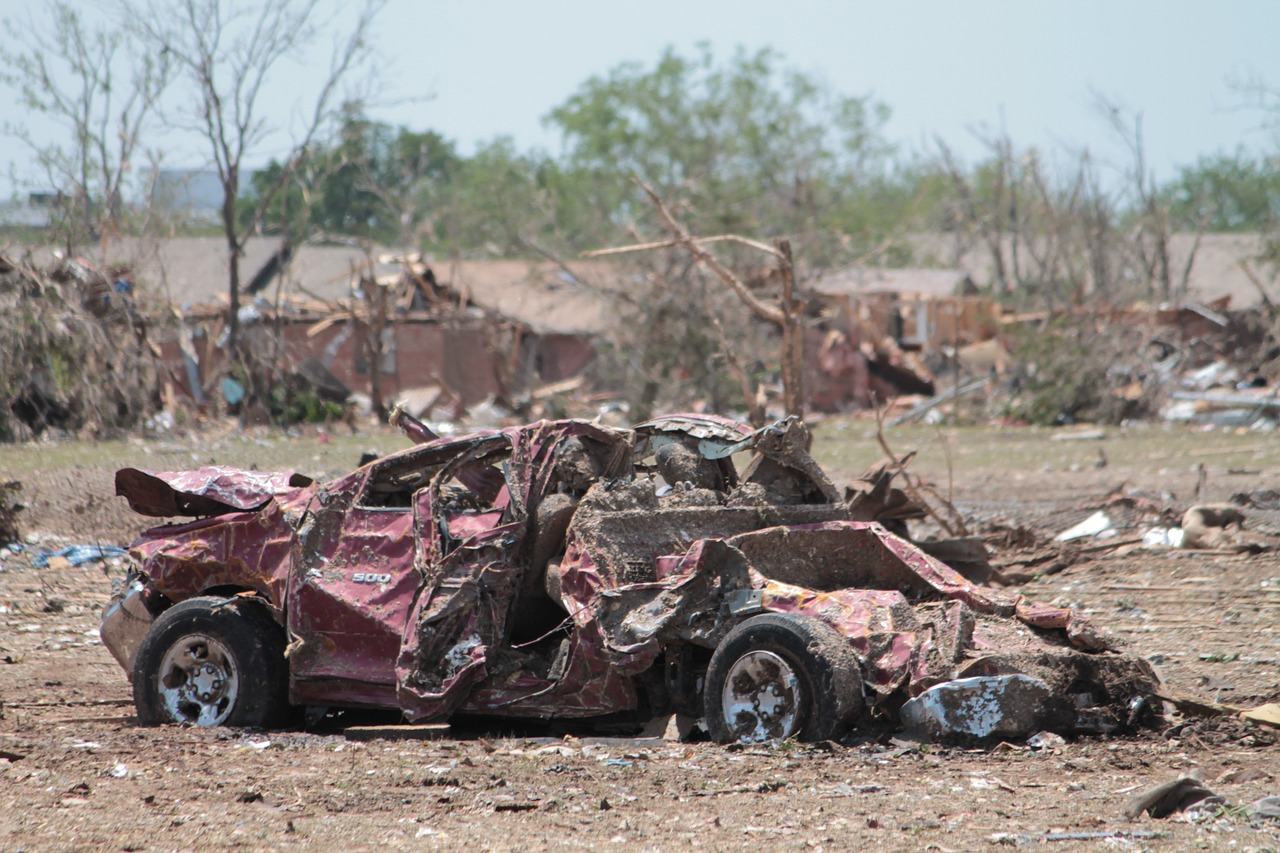
Wheeled Robots for Urban Environments
When it comes to navigating the chaotic landscapes of urban disaster zones, wheeled robots are like nimble dancers, gracefully maneuvering through debris and wreckage. These robots are specifically designed to operate in environments where traditional rescue methods might falter. Imagine a city block turned into a maze of fallen buildings and scattered obstacles; this is where wheeled robots truly shine. Their agility and versatility allow them to traverse tight spaces and uneven terrain, making them indispensable during emergencies.
Equipped with advanced sensors and cameras, wheeled robots can perform a variety of crucial tasks. They can quickly assess the situation by collecting real-time data about the environment, which is vital for effective decision-making. For instance, these robots can identify safe pathways for human rescuers, relay crucial information back to command centers, and even provide visual feeds that help teams strategize their next moves. Think of them as the eyes and ears of rescue operations, delivering vital intel without putting human lives at risk.
Moreover, wheeled robots are often designed with a modular approach, allowing them to carry different payloads depending on the mission requirements. This adaptability can include:
- Carrying medical supplies to injured individuals
- Transporting communication devices to establish contact
- Deploying lighting equipment in darkened areas
However, it's not just about their physical capabilities; the integration of AI and machine learning enhances their functionality even further. These technologies enable wheeled robots to learn from their surroundings, adjusting their movements based on real-time feedback. For example, if a robot encounters an unexpected obstacle, it can quickly recalibrate its path, ensuring that it continues to operate efficiently without human intervention.
Despite their many advantages, wheeled robots do face some challenges in urban environments. For instance, navigating through densely packed debris can sometimes lead to getting stuck or losing power. Therefore, ongoing research aims to enhance their mobility and energy efficiency, ensuring they remain reliable assets in disaster recovery scenarios. As technology advances, we can expect these robots to become even more adept at handling the unpredictable nature of urban disasters.
In summary, wheeled robots are a game-changer in urban disaster recovery. Their ability to navigate complex environments, gather critical information, and support human rescuers makes them an essential part of modern emergency response strategies. As we continue to innovate and improve these robotic systems, we can look forward to a future where they play an even larger role in saving lives and restoring order in the aftermath of disasters.
1. What are wheeled robots used for in disaster recovery?
Wheeled robots are used to navigate urban disaster zones, assess damage, deliver supplies, and provide real-time data to rescue teams.
2. How do wheeled robots navigate through debris?
They are equipped with advanced sensors and AI that help them detect obstacles and adjust their paths accordingly.
3. Can wheeled robots operate autonomously?
Yes, many wheeled robots can operate autonomously, using machine learning to adapt to their environments and make decisions in real-time.
4. What challenges do wheeled robots face in urban environments?
Challenges include navigating tight spaces, getting stuck in debris, and maintaining power during extended operations.
5. How do wheeled robots enhance safety for human rescuers?
By assessing dangerous environments and providing critical information, wheeled robots allow human rescuers to focus on saving lives without exposing themselves to unnecessary risks.

Aerial Robots for Remote Locations
Aerial robots, commonly known as drones, have become a game-changer in disaster recovery, especially in remote locations that are often difficult to access. Imagine a scenario where a natural disaster strikes a mountainous region or an isolated island—traditional rescue teams may face significant challenges in reaching these areas due to treacherous terrain or damaged infrastructure. This is where drones come into play, soaring above obstacles and providing critical support to ground teams.
One of the most remarkable features of aerial robots is their ability to cover vast areas quickly. Equipped with high-resolution cameras and sensors, drones can capture real-time data and images, offering a bird's-eye view of the disaster zone. This capability is invaluable for assessing the extent of damage, identifying safe routes for rescue teams, and locating individuals in need of assistance. For instance, during the aftermath of a flood, drones can survey flooded regions to pinpoint stranded victims, allowing for a more efficient allocation of resources.
Moreover, aerial robots are not limited to just data collection; they can also deliver essential supplies. In situations where roads are impassable, drones can transport medical supplies, food, and water directly to those in need. This rapid delivery system can be a lifesaver, especially in the critical hours following a disaster when every minute counts. Additionally, the use of drones reduces the risk to human responders, as they can perform dangerous tasks without putting lives on the line.
However, it’s important to recognize that the effectiveness of aerial drones in disaster recovery comes with its own set of challenges. Factors such as weather conditions, battery life, and regulatory restrictions can impact their operational capabilities. For example, heavy rain or strong winds can hinder a drone's flight, making it difficult to carry out its mission. Furthermore, the need for skilled operators who can navigate these machines effectively adds another layer of complexity to their deployment.
Despite these challenges, the potential of aerial robots in disaster recovery is immense. As technology continues to advance, we can expect to see improvements in drone capabilities, such as enhanced flight stability, longer battery life, and autonomous navigation. These advancements will further solidify their role as essential tools in emergency response efforts, allowing for quicker and more effective aid delivery in even the most challenging environments.
- What are aerial robots used for in disaster recovery?
Aerial robots are used for assessing damage, locating victims, and delivering supplies in hard-to-reach areas during disasters. - How do drones navigate in remote locations?
Drones utilize GPS and onboard sensors to navigate and operate in various environments, even when traditional navigation methods are not available. - What challenges do aerial robots face during disasters?
Challenges include adverse weather conditions, limited battery life, and the need for skilled operators to manage the drones effectively.

Challenges in Robotic Rescue Operations
While the integration of robotics into rescue operations is undeniably revolutionary, it’s not without its challenges. Imagine a world where robots seamlessly navigate through rubble and communicate vital information to rescue teams. Sounds amazing, right? But the reality is that these machines often face significant hurdles that can hinder their effectiveness during critical moments. One of the primary challenges is the technical limitations of the robots themselves. Many robots are designed with specific tasks in mind, which can restrict their versatility in unpredictable disaster environments. For example, a wheeled robot might struggle on uneven terrain, while aerial drones may have difficulty operating in strong winds.
Another major obstacle is the environmental conditions that often accompany disasters. From extreme weather to hazardous materials, the environments in which these robots must operate can be unpredictable and dangerous. For instance, a flood can render certain areas inaccessible, while fires can create conditions that are too hot for many robotic systems. Moreover, communication issues can arise. In chaotic disaster zones, maintaining a reliable connection between robots and human operators is crucial. If a robot loses connection, it can jeopardize the entire rescue operation, leaving victims without assistance.
Moreover, the need for human oversight cannot be overlooked. Despite advancements in AI and machine learning, robots still require human intervention in many scenarios. This need for oversight can slow down operations, as human responders must be available to monitor and control the robots. In high-stress situations where every second counts, this can be a significant drawback. As we explore the challenges faced by robotic rescue operations, it’s essential to recognize that while these machines offer great potential, overcoming these hurdles will require ongoing innovation and collaboration between engineers, emergency responders, and policymakers.
In summary, the challenges in robotic rescue operations can be categorized into the following key areas:
- Technical Limitations: Robots may lack versatility in diverse environments.
- Environmental Conditions: Extreme weather and hazardous materials can impede robot functionality.
- Communication Issues: Maintaining reliable connections in chaotic settings is crucial.
- Human Oversight: Robots often need human intervention, which can slow down response times.
Addressing these challenges is vital for maximizing the potential of robotics in disaster recovery. As technology continues to evolve, so too will the capabilities of robotic systems, paving the way for more effective and efficient rescue operations in the future.
- What types of robots are used in disaster recovery? Various robots are utilized, including drones for aerial assessments and wheeled or tracked robots for navigating debris.
- How do robots communicate with rescue teams? Robots can use various communication tools, including telepresence systems and mobile communication units, to relay information.
- What are the main benefits of using robots in disaster recovery? Robots enhance safety, improve efficiency, and provide real-time data that can significantly aid in rescue operations.
- What future advancements are expected in disaster robotics? Innovations in AI, machine learning, and material science are anticipated to enhance robot capabilities and operational efficiency.

Enhancing Communication with Robotics
In the chaotic aftermath of a disaster, communication can be as crucial as the physical rescue efforts themselves. Imagine a scenario where traditional communication methods fail, leaving responders and victims alike in the dark. This is where robotics steps in to bridge the gap, ensuring that vital information flows seamlessly between all parties involved. By leveraging advanced robotic technologies, we can create reliable communication channels that enhance situational awareness and improve disaster response.
Robots equipped with communication tools are revolutionizing the way we interact during emergencies. For instance, telepresence robots allow rescue teams to communicate with victims in real-time, providing both emotional support and crucial information. These robots can be remotely operated, enabling experts to assess situations from afar without putting themselves in harm's way. Additionally, mobile communication units can be deployed to affected areas, establishing networks that help coordinate rescue efforts and relay important updates.
One of the standout features of robotic communication tools is their ability to operate in challenging environments where human responders may struggle. For example, in areas with damaged infrastructure, where cell towers may be down, these robots can create temporary communication networks. This capability not only keeps responders informed but also helps victims receive timely assistance. The integration of robotics with emergency services ensures that everyone involved is on the same page, ultimately leading to more effective disaster recovery.
Moreover, the use of robotics in communication extends beyond just relaying messages. These technologies can gather and analyze data, providing insights that inform decision-making during crises. For instance, a robotic unit might collect information about the number of people in need or the types of services required, allowing rescue teams to prioritize their efforts effectively. This data-driven approach enhances the overall efficiency of disaster response operations.
As we look to the future, the potential for robotics to enhance communication in disaster recovery is vast. With advancements in artificial intelligence and machine learning, robots will not only relay information but also interpret it, making autonomous decisions that can save lives. Imagine a scenario where a robot can autonomously assess a situation, determine the best course of action, and communicate that to human responders. This level of integration could transform disaster recovery, making it faster, safer, and more effective.
In summary, the role of robotics in enhancing communication during disasters cannot be overstated. By providing reliable information channels, facilitating real-time interactions, and gathering crucial data, these technologies are becoming indispensable tools in the fight against the chaos that follows a disaster. As we continue to innovate and integrate robotics into our emergency response strategies, we can look forward to a future where communication is seamless, and lives are saved.
- How do telepresence robots work in disaster situations?
Telepresence robots allow remote communication between experts and victims, providing real-time support and information exchange. - What challenges do robotic communication tools face?
Challenges include technical limitations, the need for reliable power sources, and ensuring that robots can operate in hazardous environments. - Can robots autonomously make decisions during emergencies?
With advancements in AI and machine learning, future robots may be capable of making autonomous decisions based on real-time data.

Robotic Communication Tools
In the chaotic aftermath of a disaster, communication can become a lifeline for those affected and the responders trying to help. have emerged as essential assets in enhancing this critical aspect of disaster recovery. These tools are not just gadgets; they are sophisticated systems designed to facilitate seamless interaction between rescue teams and the communities they serve. Imagine a scenario where a disaster strikes, and traditional communication lines are down. This is where robots come into play, ensuring that vital information flows smoothly despite the chaos.
One of the most notable types of robotic communication tools is the telepresence robot. These robots are equipped with cameras, microphones, and screens, allowing responders to virtually "be there" without physically being present. This capability is invaluable, especially in situations where human access is limited or dangerous. For instance, a telepresence robot can be sent into a damaged building to assess the situation, relay information back to command centers, and even allow victims to communicate directly with rescue teams. It’s like having a remote eye in the sky that can navigate through wreckage while keeping the rescue teams informed.
Another key player in the realm of robotic communication is the mobile communication unit. These units are often deployed to disaster zones to establish reliable communication networks. Equipped with satellite links and advanced communication technologies, they act as hubs for information dissemination. They can connect ground teams with local authorities, NGOs, and even the media, ensuring that everyone is on the same page. This is crucial for coordinating efforts and preventing misinformation, which can lead to chaos rather than recovery.
To illustrate the impact of these tools, consider the following table that highlights some of the primary robotic communication tools used in disaster recovery:
| Tool | Functionality | Benefits |
|---|---|---|
| Telepresence Robots | Remote visual and audio communication | Real-time assessment, victim interaction |
| Mobile Communication Units | Establish communication networks | Coordinated response, information sharing |
| Drones with Communication Capabilities | Aerial data collection and relaying | Access to hard-to-reach areas, quick updates |
Moreover, the integration of these robotic tools with existing emergency services can create a more robust communication framework. For example, when a telepresence robot is used in conjunction with mobile units, it can provide live updates that help coordinate logistics and resource allocation, ensuring that aid reaches those who need it most. The synergy created by these robotic communication tools not only enhances the efficiency of disaster response but also fosters a sense of connection and reassurance for those affected by the disaster.
As we look to the future, the potential for these tools to evolve further is exciting. With advancements in AI and machine learning, we can expect even smarter communication systems that can predict needs, automate responses, and further bridge the gap between responders and victims. In the end, robotic communication tools are not just about technology; they represent hope, connection, and the promise of a more effective disaster recovery process.
- What are robotic communication tools?
Robotic communication tools are devices that facilitate communication during disasters, helping to connect rescue teams with affected individuals and communities.
- How do telepresence robots work?
Telepresence robots use cameras and microphones to allow remote communication, enabling responders to assess situations and interact with victims from a distance.
- What role do mobile communication units play?
Mobile communication units establish reliable communication networks in disaster zones, ensuring that information is shared effectively among all parties involved.
- Can drones be used for communication?
Yes, drones can be equipped with communication capabilities to relay information and provide aerial views of disaster areas, enhancing situational awareness.
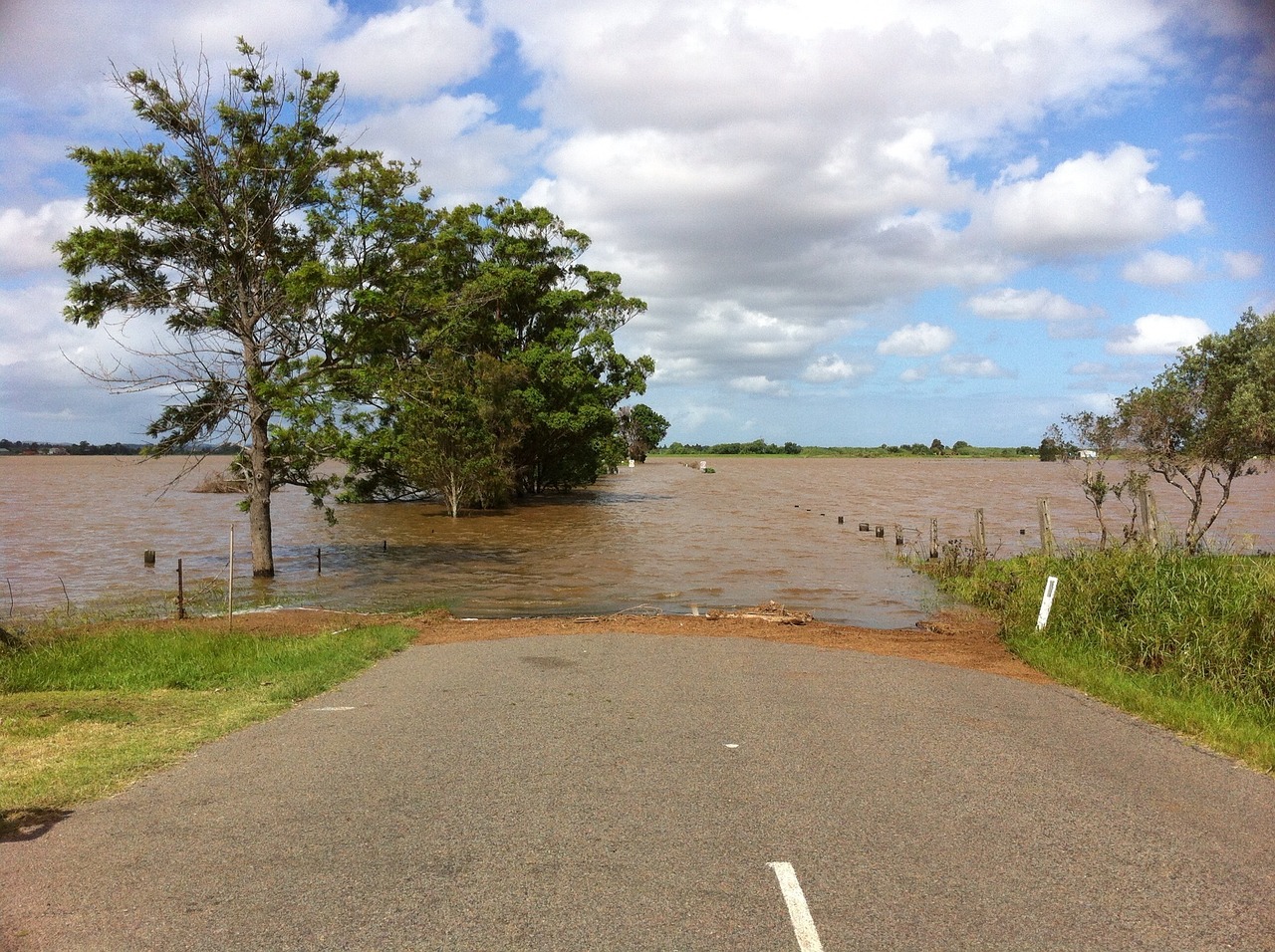
Integration with Emergency Services
Integrating robotics with emergency services is not just a trend; it's a necessity in our rapidly changing world. Imagine a scenario where every second counts—fires raging, floods sweeping through towns, or earthquakes shaking the ground beneath us. In these critical moments, the coordination between human responders and robotic systems can mean the difference between life and death. By leveraging advanced technology, emergency services can streamline their operations and enhance collaboration, leading to more effective disaster response strategies.
One of the most significant benefits of this integration is improved situational awareness. When robots are deployed alongside human teams, they can gather real-time data and relay it back to command centers. This information can include everything from environmental conditions to the status of victims trapped under rubble. With accurate and timely data, emergency responders can make informed decisions quickly. For example, drones can survey a disaster site from above, providing a bird's-eye view that helps identify the most affected areas and prioritize rescue efforts.
Furthermore, the synergy between robotics and emergency services allows for a more coordinated response. When robots are equipped with communication tools, they can facilitate seamless interaction between different teams on the ground. This is crucial in chaotic situations where miscommunication can lead to disastrous outcomes. For instance, a telepresence robot can connect medical teams with victims, ensuring that those in need receive immediate attention while also keeping responders informed of the evolving situation. The ability to share critical information in real-time enhances the overall effectiveness of disaster response operations.
However, the integration of robotics into emergency services is not without its challenges. It requires a shift in mindset and training for human responders to work alongside these advanced systems. Moreover, ensuring that these robotic tools are user-friendly and reliable is essential. It's vital that responders can trust the technology they are using, especially in high-stress environments. This is why ongoing training and simulation exercises are necessary to prepare teams for real-world scenarios where they will need to rely on robotic assistance.
In summary, the integration of robotics with emergency services represents a transformative leap forward in disaster response capabilities. By combining human intuition with robotic precision, we can create a more resilient and responsive emergency management system. As technology continues to evolve, the potential for robotics to enhance our disaster recovery efforts is boundless, paving the way for safer communities and more effective responses in times of crisis.
- How do robots improve disaster recovery? Robots enhance disaster recovery by providing real-time data, navigating hazardous environments, and improving communication between responders and victims.
- What types of robots are used in disaster recovery? Various types of robots are employed, including drones for aerial assessments, wheeled robots for urban navigation, and tracked robots for rugged terrains.
- What challenges do robotic systems face in emergency situations? Robotic systems may encounter technical limitations, environmental obstacles, and the need for human oversight to ensure effective operation.
- How can robotics improve communication during disasters? Robotics can facilitate communication by relaying messages, providing telepresence capabilities, and coordinating efforts between rescue teams and affected communities.
- What is the future of robotics in disaster recovery? The future looks promising with advancements in AI, machine learning, and material science, which will enhance robot capabilities and efficiency in emergency situations.

Future Innovations in Disaster Robotics
The realm of disaster recovery is on the brink of a technological revolution, driven by the rapid advancements in robotics. As we look to the future, the integration of cutting-edge technologies such as artificial intelligence (AI), machine learning, and material science is set to redefine how we approach disaster response and recovery. Imagine a world where robots not only assist in rescue operations but also autonomously adapt to the chaotic environments of disasters. This is not just a dream; it's a reality that is becoming increasingly feasible.
One of the most exciting prospects is the application of AI and machine learning in disaster robotics. These technologies will empower robots to analyze vast amounts of data in real-time, allowing them to make informed decisions on the fly. For instance, a robot equipped with AI could assess the structural integrity of a building after an earthquake and determine the safest path for rescue efforts. This capability will enhance the speed and effectiveness of rescue operations, ultimately saving more lives.
Furthermore, the development of collaborative robots, or cobots, is another significant innovation on the horizon. Unlike traditional robots that operate independently, cobots are designed to work alongside human responders. This partnership allows for a seamless integration of human intuition and robotic precision. For example, during a flood, a cobot could assist a rescue worker by carrying supplies or providing real-time data about the water levels, thereby enhancing overall efficiency and safety.
As we delve deeper into the future, we can also expect advancements in robotic materials. The use of lightweight yet durable materials will enable robots to maneuver easily through debris while still being robust enough to withstand harsh conditions. Imagine a robot that can traverse a collapsed building, equipped with sensors that detect heat signatures or sounds, pinpointing the locations of survivors with remarkable accuracy.
In addition to these technologies, the integration of 5G connectivity will play a pivotal role in the evolution of disaster robotics. With faster data transmission rates, robots will be able to share information instantaneously with rescue teams. This means that a drone surveying a disaster site can relay critical information about hazardous areas or potential victims in real-time, allowing teams to make quick, informed decisions.
While the potential of robotics in disaster recovery is immense, it is essential to address the associated challenges. As these technologies evolve, issues related to ethics, privacy, and security will need to be carefully considered. For instance, how do we ensure that the data collected by these robots is used responsibly? How can we protect the privacy of individuals during rescue operations? These are questions that will require thoughtful solutions as we move forward.
In conclusion, the future of robotics in disaster recovery is not just about enhancing capabilities; it's about transforming the very nature of how we respond to emergencies. With ongoing innovations and a commitment to ethical practices, we can harness the power of robotics to create a safer, more efficient world in the face of disasters.
- What role does AI play in disaster robotics?
AI enables robots to analyze data and make decisions autonomously, improving the efficiency of rescue operations. - How do collaborative robots enhance disaster recovery?
Collaborative robots work alongside human responders, combining robotic precision with human intuition for better outcomes. - What challenges do we face with future robotics?
Challenges include ethical concerns, privacy issues, and the need for security in data collection and usage. - What advancements can we expect in robotic materials?
Future materials will be lightweight yet durable, allowing robots to navigate challenging environments effectively.
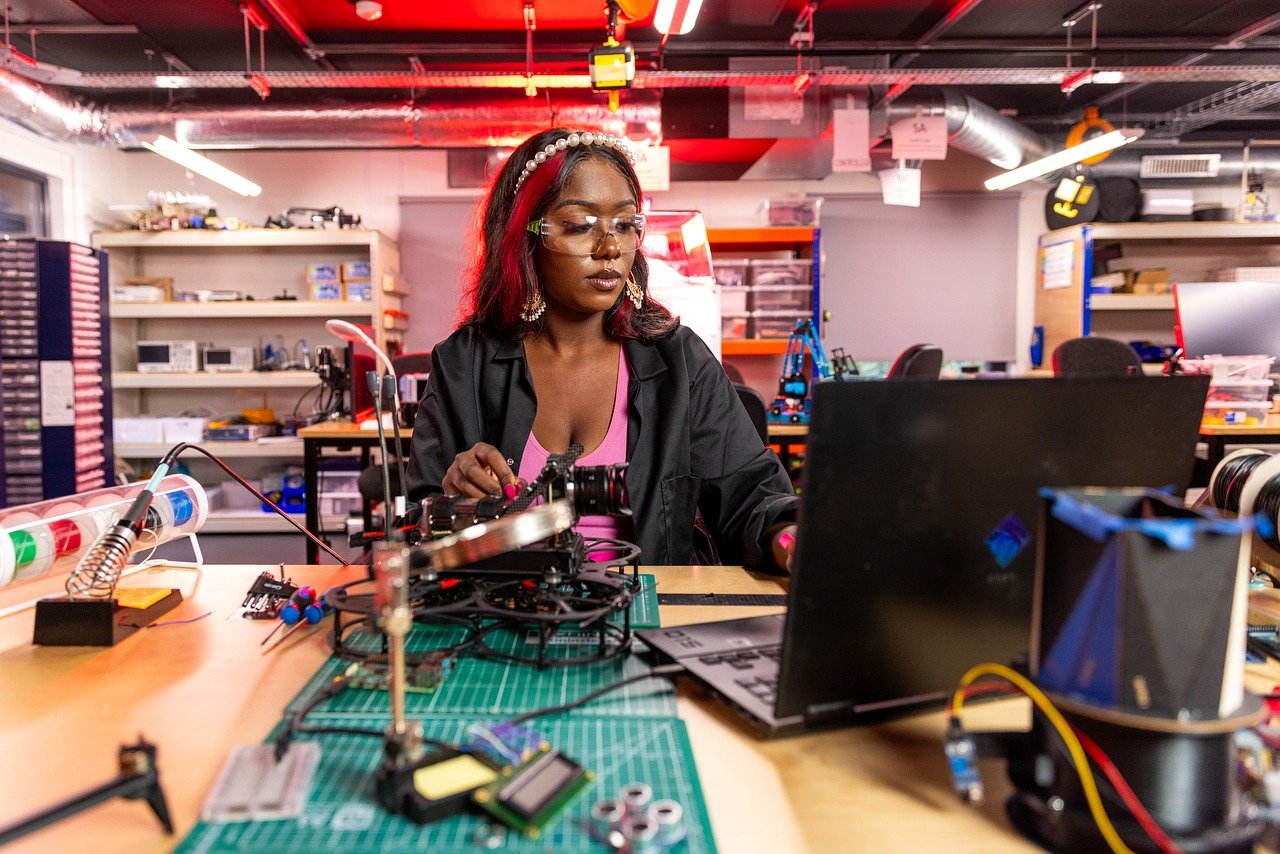
AI and Machine Learning Applications
In the rapidly evolving world of disaster recovery, Artificial Intelligence (AI) and machine learning are emerging as game-changers. Imagine a robot that can not only navigate through debris but also learn from its environment in real-time. This is not science fiction; it's the future of disaster response. These technologies empower robots to analyze vast amounts of data, recognize patterns, and make informed decisions autonomously, significantly enhancing their operational capabilities.
One of the most exciting applications of AI in disaster recovery is the ability to predict potential hazards. By analyzing historical data and real-time information, AI algorithms can forecast where disasters are likely to strike, allowing for proactive measures to be taken. For instance, if a region is prone to earthquakes, AI systems can analyze seismic activity to alert emergency services well in advance. This predictive capability can save countless lives and resources.
Moreover, machine learning algorithms can improve the decision-making process during emergencies. By processing data from various sources—such as social media, satellite imagery, and sensor networks—these algorithms can provide real-time insights into the situation on the ground. For example, they can identify areas that require immediate attention, prioritize rescue efforts, and even suggest the best routes for emergency responders to take. This level of situational awareness is invaluable in chaotic disaster scenarios.
To illustrate the impact of AI and machine learning in disaster recovery, consider the following table:
| Application | Description | Benefits |
|---|---|---|
| Predictive Analytics | Analyzes data to forecast potential disasters | Enables proactive measures, saving lives |
| Real-Time Data Processing | Processes information from multiple sources | Enhances situational awareness for responders |
| Autonomous Navigation | Allows robots to navigate complex environments | Improves rescue efficiency and safety |
As we delve deeper into the realm of AI and machine learning, we see a future where robots can collaborate seamlessly with human responders. These collaborative robots, or cobots, are designed to assist humans rather than replace them. They can take on dangerous tasks, allowing human rescuers to focus on more critical aspects of disaster recovery. Imagine a scenario where a robot locates a victim trapped under rubble and relays their condition to human responders, who can then prioritize their rescue. This synergy between humans and machines is the key to a more effective disaster response.
In conclusion, the integration of AI and machine learning into disaster robotics is not just a trend; it's a necessity. As these technologies continue to advance, we can expect robots to become even more capable, adaptable, and efficient in their roles during emergencies. The future is bright, and with AI at the helm, we are poised to revolutionize the way we approach disaster recovery.
- What is the role of AI in disaster recovery? AI helps predict disasters, analyzes data for better decision-making, and enhances the capabilities of robots in emergency situations.
- How do machine learning algorithms improve rescue operations? They process real-time data to provide insights, prioritize rescue efforts, and suggest optimal routes for responders.
- What are collaborative robots (cobots)? Cobots are designed to work alongside human responders, assisting with tasks while ensuring safety and efficiency.
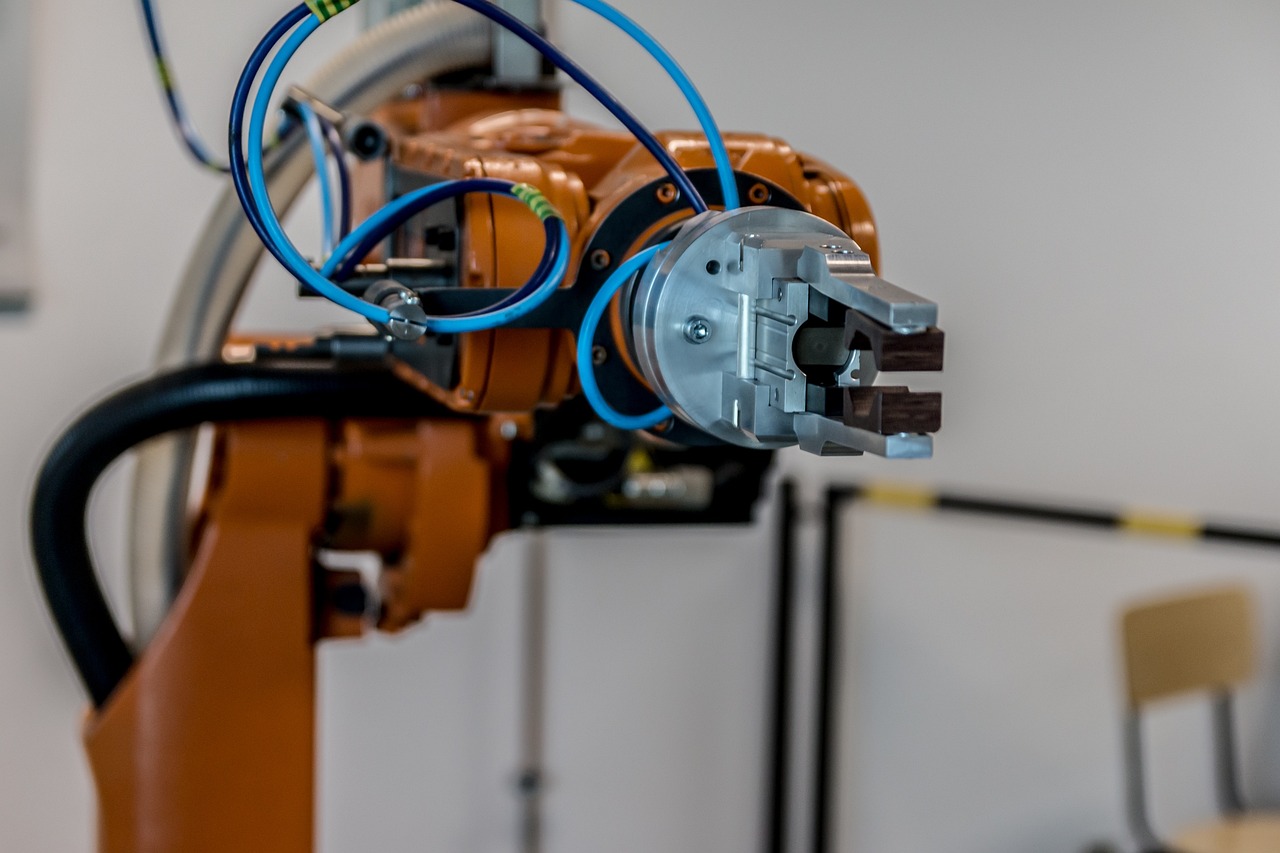
Collaborative Robots for Enhanced Efficiency
Collaborative robots, often referred to as cobots, are making waves in the realm of disaster recovery by working hand-in-hand with human responders. Imagine a scenario where a human rescuer is navigating through the wreckage of a collapsed building, and right beside them is a robot equipped with advanced sensors and tools, ready to assist. This dynamic partnership not only enhances the efficiency of the rescue operations but also significantly boosts the safety of the human responders. The synergy between humans and robots is akin to a well-choreographed dance, where each partner knows their role and complements the other's strengths.
One of the most compelling aspects of cobots is their ability to perform repetitive or dangerous tasks that would otherwise pose risks to human lives. For instance, in a disaster scenario, a cobot can be deployed to sift through debris, using its sensors to detect heat signatures or the sound of a trapped victim. This allows human rescuers to focus on more complex decision-making and emotional support for victims, ensuring that their expertise is utilized where it matters most. The result? A more streamlined and effective rescue operation that saves time and lives.
Moreover, cobots are designed to be user-friendly and adaptable. They can be programmed or trained on-the-fly, enabling them to adjust to the rapidly changing conditions typical of disaster zones. This adaptability is crucial, as the environment can shift dramatically due to aftershocks or ongoing weather events. Cobots can also be equipped with communication tools to relay real-time data back to command centers, ensuring that all parties involved in the rescue efforts are on the same page.
To illustrate the impact of collaborative robots in disaster recovery, consider the following table that outlines their key features and benefits:
| Feature | Benefit |
|---|---|
| Real-time Data Sharing | Enhances situational awareness for rescue teams. |
| Task Automation | Reduces the physical burden on human responders. |
| Adaptability | Can quickly adjust to new challenges in the environment. |
| Safety Enhancements | Minimizes risks to human life by handling hazardous tasks. |
As we look to the future, the role of collaborative robots in disaster recovery will likely expand. With ongoing advancements in technology, these robots will become even more capable, perhaps even integrating artificial intelligence to improve their decision-making processes. The collaboration between humans and robots will not only redefine how we respond to disasters but also set a new standard for efficiency and safety in emergency management.
- What are collaborative robots? Collaborative robots, or cobots, are designed to work alongside humans in various tasks, enhancing efficiency and safety.
- How do cobots improve disaster response? They automate dangerous tasks, provide real-time data, and adapt to changing environments, allowing human responders to focus on critical decision-making.
- Are cobots safe to use? Yes, cobots are designed with safety features that enable them to operate in close proximity to humans without posing risks.
- What is the future of robotics in disaster recovery? The future looks promising with advancements in AI and machine learning, which will enhance the capabilities of robots in emergency situations.
Frequently Asked Questions
- How do drones assist in disaster recovery?
Drones play a crucial role in disaster recovery by providing aerial views and real-time data. They can quickly assess damage and help in better resource allocation, especially in hard-to-reach areas where traditional methods may fail.
- What types of robots are used in search and rescue operations?
There are several types of robots used in search and rescue, including wheeled, tracked, and aerial models. Each type is designed for specific environments, enhancing the effectiveness of rescue operations based on the terrain and situation.
- What are the advantages of wheeled robots in urban environments?
Wheeled robots are particularly advantageous in urban settings as they can navigate through debris and tight spaces efficiently. Their design allows for quick movement and effective assessment of affected areas, making them ideal for urban disaster scenarios.
- How do aerial robots contribute to disaster recovery?
Aerial robots, or drones, excel in reaching remote or inaccessible locations. They can cover large areas quickly, providing vital information to rescue teams and helping coordinate relief efforts more effectively.
- What challenges do robotic rescue operations face?
Robotic rescue operations encounter challenges such as technical limitations, environmental obstacles, and the necessity for human oversight. Addressing these issues is essential to maximize the effectiveness of robots in disaster scenarios.
- How do robots enhance communication during disasters?
Robots improve communication during disasters by providing reliable information channels. They can relay messages between rescue teams and affected communities, ensuring that critical information is shared promptly and effectively.
- What are robotic communication tools?
Robotic communication tools include telepresence robots and mobile communication units that facilitate interaction between responders and victims. These tools ensure timely sharing of critical information, aiding in decision-making during emergencies.
- How can robotics be integrated with emergency services?
Integrating robotics with emergency services can streamline operations and enhance collaboration. This synergy improves situational awareness, leading to more coordinated and efficient disaster response efforts.
- What future innovations can we expect in disaster robotics?
The future of disaster robotics is bright, with advancements in AI, machine learning, and material science on the horizon. These innovations will enhance robot capabilities, making them even more effective in emergency situations.
- How will AI and machine learning impact disaster recovery?
AI and machine learning are set to revolutionize disaster robotics by enabling smarter decision-making and autonomous operations. These technologies will allow robots to adapt to changing environments and improve their rescue capabilities.
- What are collaborative robots, and how do they help in disasters?
Collaborative robots, or cobots, work alongside human responders to optimize disaster recovery efforts. Their ability to assist and augment human capabilities leads to safer and more efficient operations in crisis situations.





